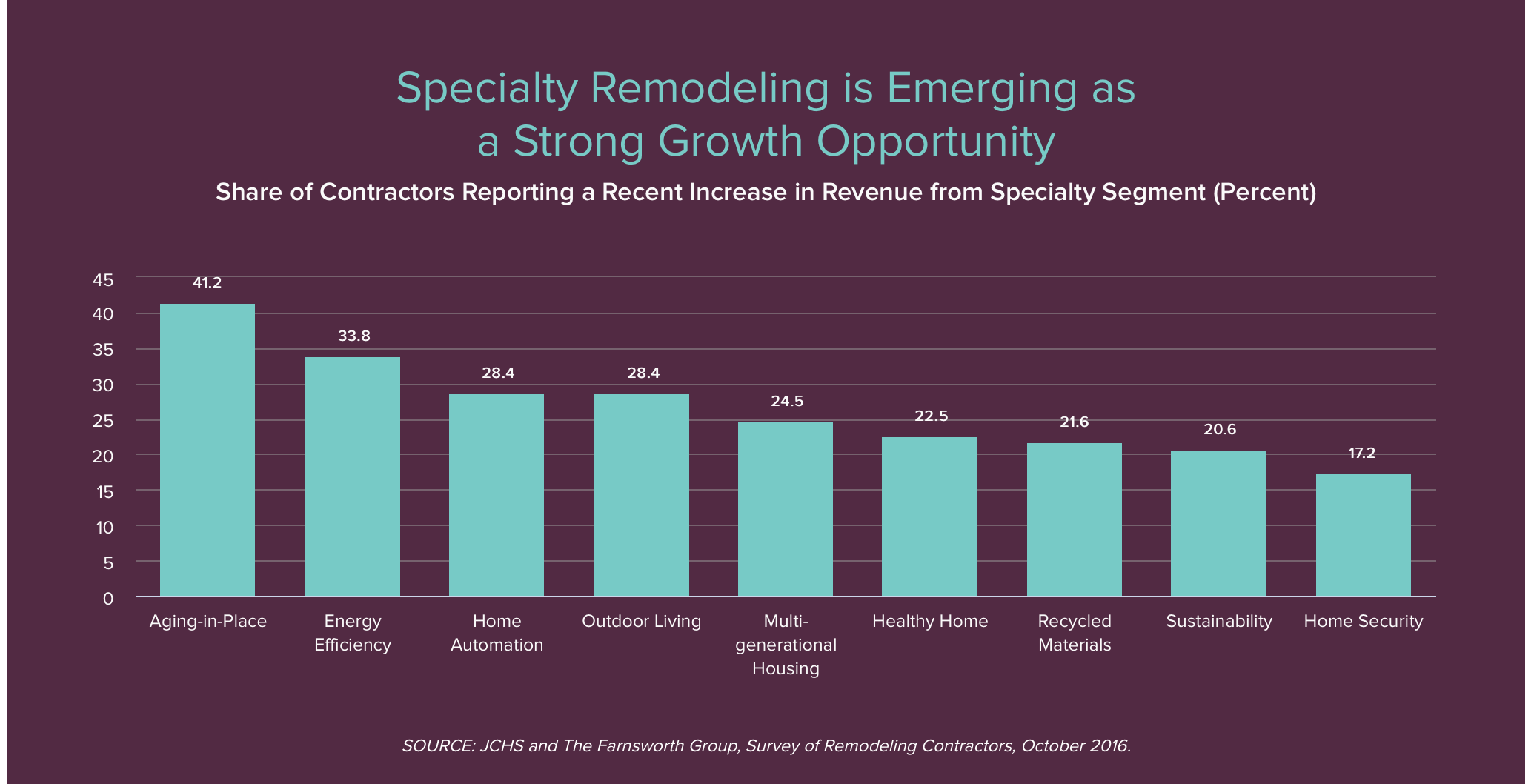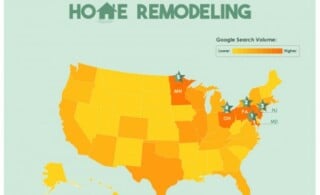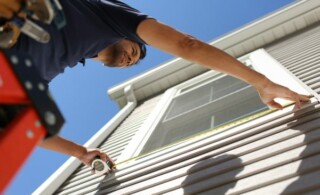February 28, 2017
I just read the new report called “Improving America’s Housing: Demographic Change and the Remodeling Outlook” The Harvard Joint Center, as always, did a fantastic job summarizing the key trends and issues. Here are some of my takeaways and thoughts.
Not One, but Two 900-Pound Gorillas (The Boomer and Millennial Generations)
The report notes that home owners age 55+ dominate and will continue to dominate in terms of home improvement spending over the next ten years (they use 2015-2025 as their forecast period). I agree with that 100%. I would also hasten to add that the Millennial generation will exert more and more influence during the next five years.
- I expect Millennials to increase their rate of homeownership over the next five years. It is already happening with the leading edge of this generation; the people in their early 30s are getting married and having children at a rate that is similar to that of Gen X. Next we will see the younger Millennials start to get married and have kids, and then they will want the single-family home. Once they get into a home, they will spend money repairing and maintaining it, as well as enhancing it.
- From our own work, we know that Millennial homeowners are, as the Harvard report reinforces, behind Boomers in terms of per-household home improvement spending, but they are increasing their spend, and they are already out-spending Gen X homeowners on a per-household basis. When people buy a home, they generally tend to want to personalize it, and the Millennial generation is particularly interested in personalizing a space for their self-expression. Add to this the fact that Millennials will tend to buy “fixer-uppers” just so they can get into home ownership, and they will spend a couple of years gradually doing the work on their house.
I Don’t Think Anybody Wants to “Age in Place…”
The image that accompanies this post is an exhibit from the JCHS interactive infographic (released along with the report) that I think is very informative and important. It shows that there is increased demand for aging-in-place modifications. I believe there is a multi-billion dollar growth opportunity in this kind of home improvement, and we will see more and more remodelers getting requests for the type of work. That said, companies that do this kind of work need to shed the term “aging-in-place.” (Nobody wants to imagine themselves aging in place; it sounds a bit like sitting around and gathering cobwebs). They need to avoid using that term when discussing the idea with customers, but still get the idea across that the longer they can live independently in their own home, the better.
How the Elderly Will Adopt Smart-Home Tech
I anticipate that there will be an enhanced intersection between smart-home tech and aging-in-place. The folks in their 70s, 80s and 90s don’t want to learn about the technology, but people in their 30s and 40s are buying tech for their parents’ homes to allow them to stay in their homes and live independently for a longer period of time.
More on the Labor Shortage Issue
The JCHS report talks about the labor shortage that is holding back growth for a lot of home improvement companies, and covers the subject well. Our research confirms that there are companies that are stepping up the pay scale for motivated young people. They are ready to take somebody fresh out of high school, with no experience, train them, and within three years have them making “six figures” if they have the work ethic to get to a managerial position in their firm. But higher wages are only part of the solution. And, potential new immigration policies could add barriers.
One closing thought relating to home improvement trends over the next decade: I expect that DIY will grow faster than pro service for the next five years, and then the DIY share will level off and later decline. The growth in the next five years will come from the rising homeownership rate of millennials and the resulting increase in millennials’ share of all HI. At some point in the future, the pro share will increase again, just by the greater propensity to use a pro as age increases. Once the millennials start hitting age 35 in large numbers, which will be about six or seven years from now, we will expect to see faster growth in “Do-it-For-Me” demand.

 2015 True Cost Report & Homeowner Insights
2015 True Cost Report & Homeowner Insights  Top States for Home Improvement
Top States for Home Improvement  HomeAdvisor: July Kicks Off Busy Season for Bathroom Projects
HomeAdvisor: July Kicks Off Busy Season for Bathroom Projects  Urban Remodeling Trends in San Francisco, CA
Urban Remodeling Trends in San Francisco, CA  “Heard in the Halls” at KBIS
“Heard in the Halls” at KBIS 

Are You Familiar With This Topic? Share Your Experience.